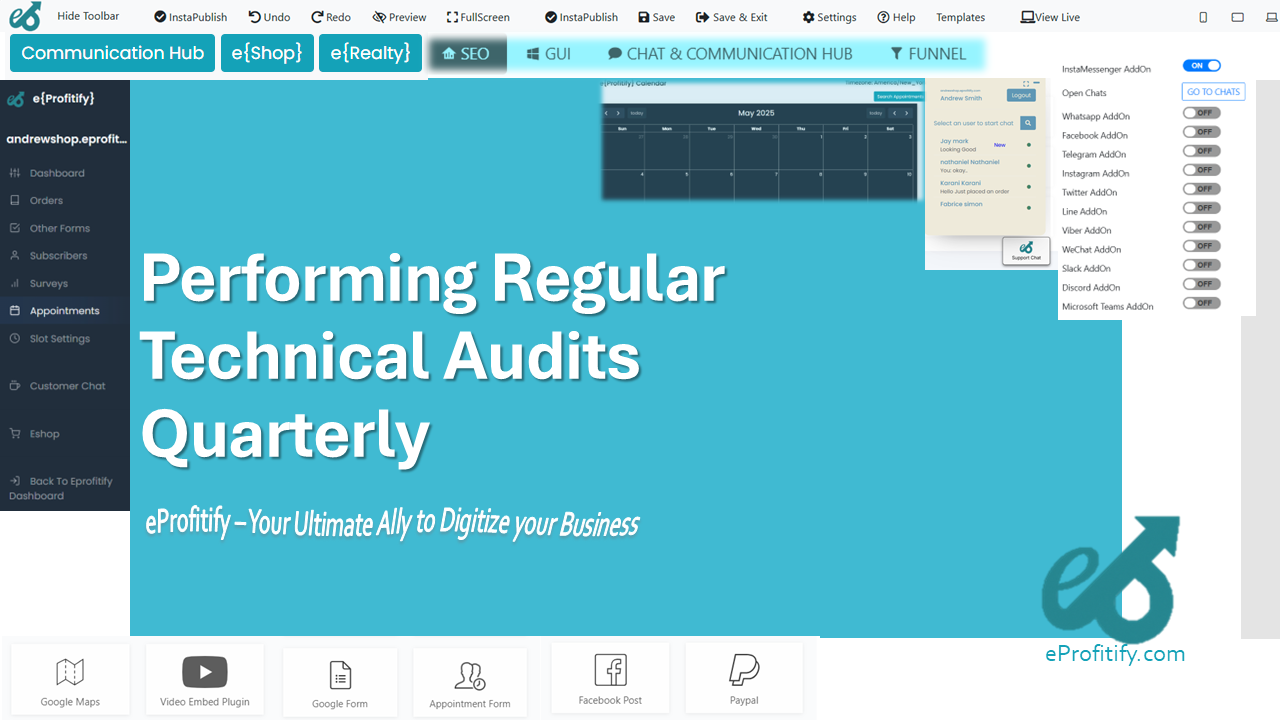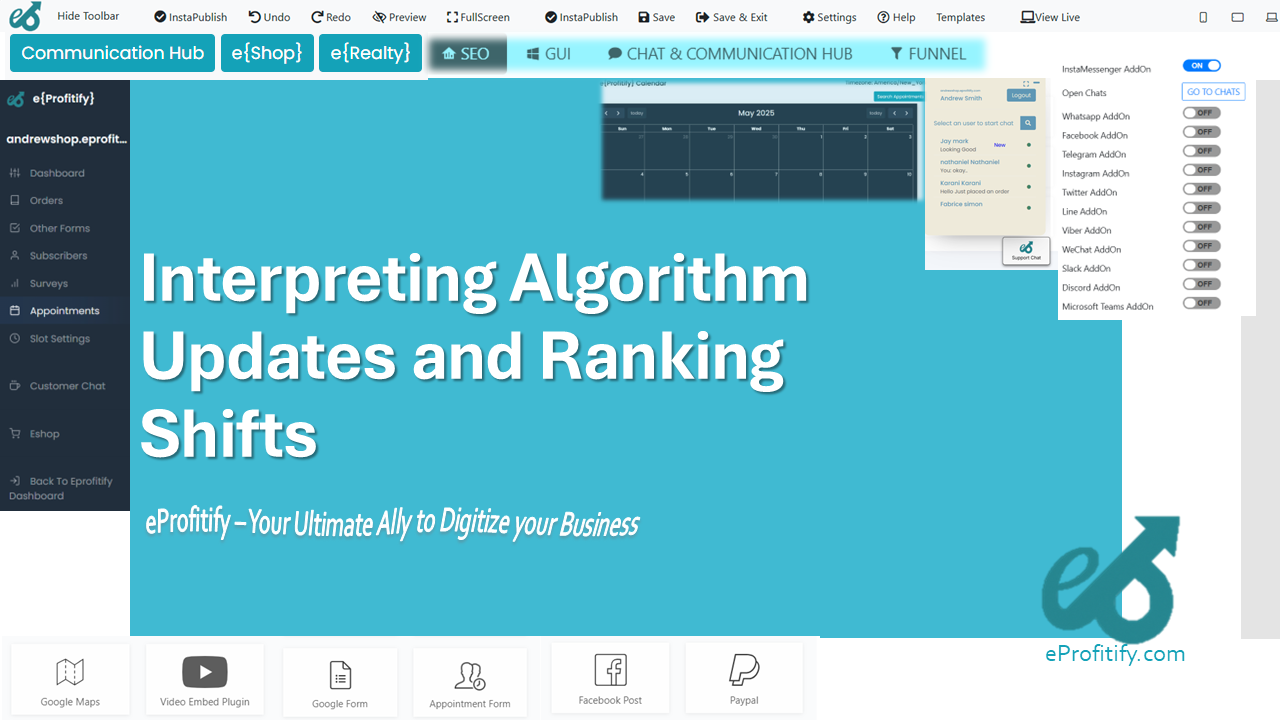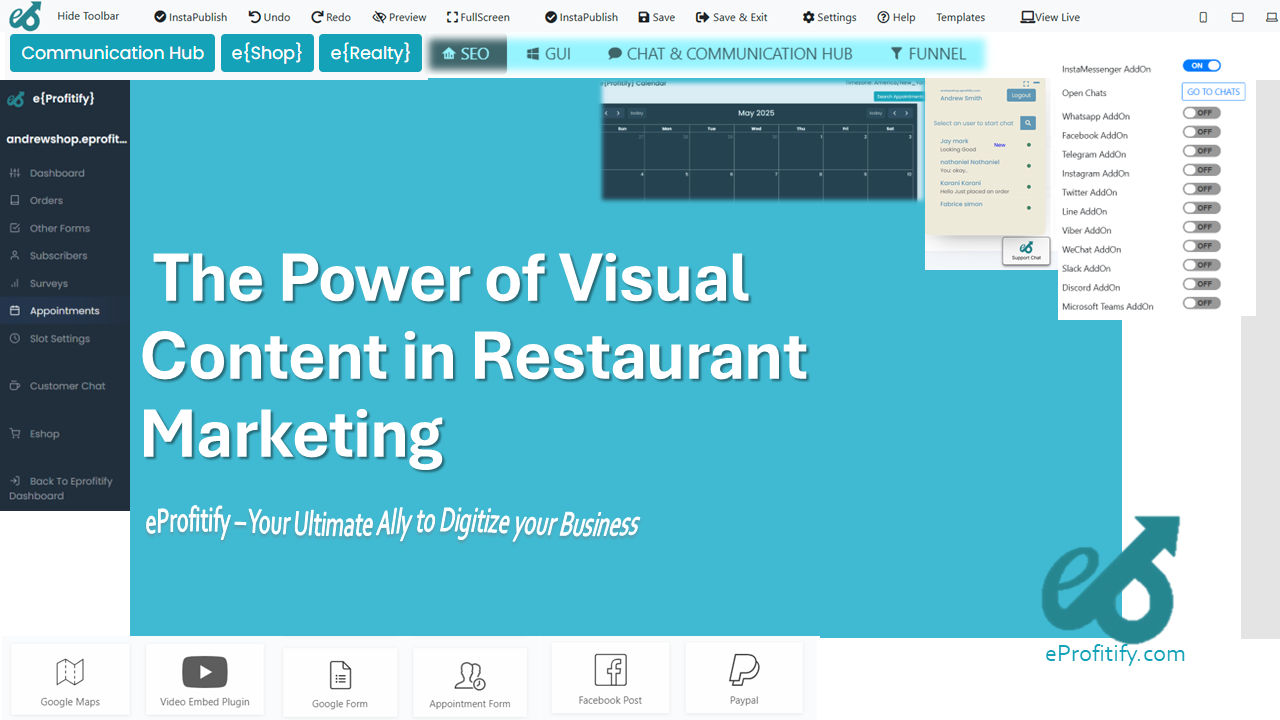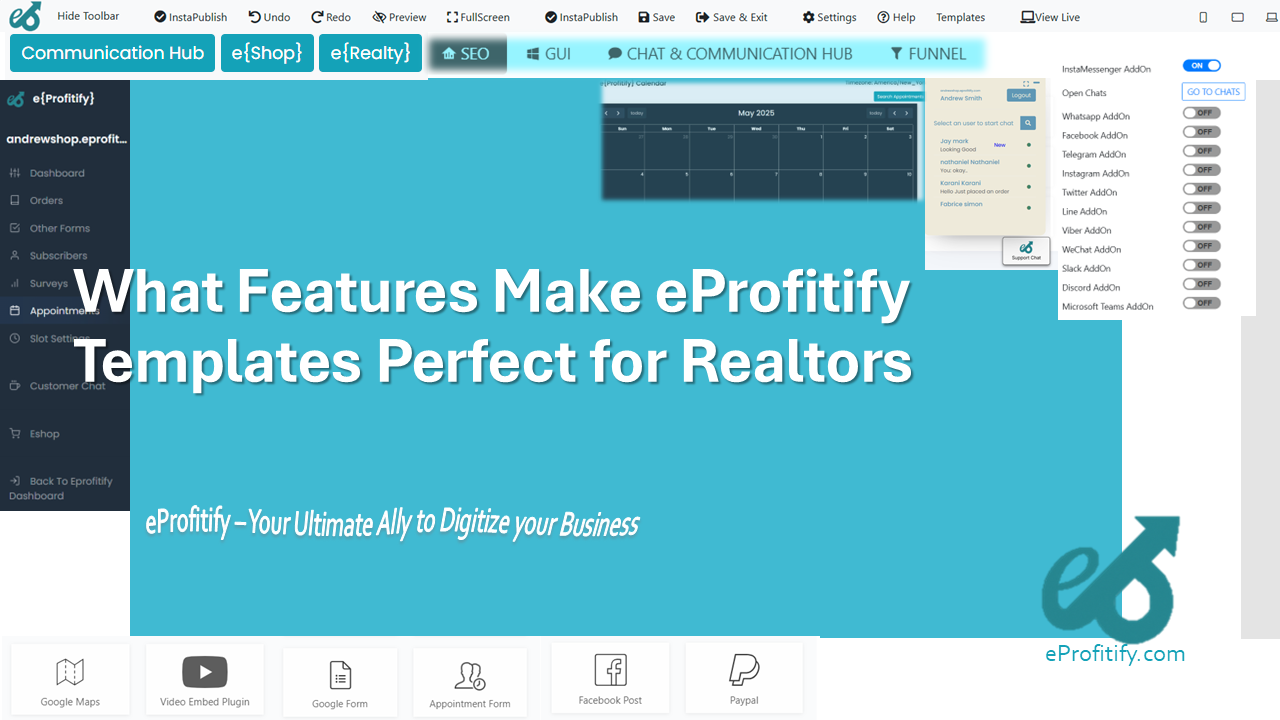Performing Regular Technical Audits Quarterly

Schedule a LIVE Zoom call with an eProfitify Expert.
Performing Regular Technical Audits Quarterly: Ensuring Digital Excellence
In today’s hyper-connected digital landscape, businesses rely heavily on their online presence and technological infrastructure to drive growth, engage customers, and maintain competitive advantage. However, as technology evolves rapidly, so do the risks and challenges associated with maintaining optimal performance, security, and compliance. This is why performing regular technical audits quarterly has become a non-negotiable practice for modern enterprises. By conducting systematic evaluations every three months, organizations can identify vulnerabilities, streamline operations, and adapt to emerging trends proactively.
The Importance of Technical Audits
A technical audit is a comprehensive review of a company’s digital assets, including websites, applications, servers, databases, and security protocols. It assesses performance metrics, code quality, SEO effectiveness, data integrity, and compliance with regulations like GDPR or HIPAA. Without regular audits, businesses risk encountering downtime, security breaches, or penalties that damage reputation and revenue.
Key Components of a Technical Audit
- Security Assessment
Cyberattacks cost businesses an average of $4.45 million per breach in 2023 (IBM Security). Audits uncover vulnerabilities like outdated software, weak passwords, or unencrypted data. Tools like penetration testing and SSL certificate checks are critical here. - Performance Optimization
Slow-loading websites frustrate users: 53% abandon sites that take longer than 3 seconds to load (Google). Audits evaluate server response times, caching efficiency, and code bottlenecks. - SEO and Accessibility
Websites with poor SEO lose visibility. Audits analyze meta tags, mobile responsiveness (critically important, as 54.8% of global web traffic comes from mobile devices), and alt-text compliance. - Compliance Checks
Non-compliance with regulations can lead to hefty fines. For example, GDPR violations resulted in €1.3 billion in penalties across Europe in 2022. - Usability and UX
Audits ensure navigation intuitiveness and cross-browser functionality, reducing bounce rates and improving conversion.
Why Quarterly Audits Outperform Annual or Ad-Hoc Reviews
Annual audits are insufficient in a fast-paced digital environment. Quarterly checks offer:
- Proactive Threat Mitigation: Identifies vulnerabilities before hackers exploit them.
- Agility: Aligns with software update cycles and market trends.
- Cost Efficiency: Fixing minor issues early avoids expensive overhauls later.
- Data-Driven Decisions: Regular insights help refine strategies for SEO, UX, and scalability.
Studies show companies conducting quarterly audits resolve issues 40% faster than those relying on annual reviews (Ponemon Institute).
Steps to Implement Quarterly Technical Audits
- Assemble a Cross-Functional Team: Include IT, marketing, and compliance experts.
- Leverage Automated Tools: Use platforms like eProfitify to streamline audits.
- Prioritize Critical Issues: Address high-risk vulnerabilities first.
- Document Findings and Actions: Maintain records for accountability and future reference.
- Monitor Post-Audit Performance: Track improvements using analytics tools.
How eProfitify Enhances Technical Audit Efficiency
eProfitify, a leading website publishing and management platform, offers integrated tools that simplify technical audits and daily operations. Its features are designed to address audit components seamlessly:
- Instant Messaging: Facilitate real-time collaboration between teams during audits, ensuring swift resolution of identified issues.
- Appointment Management System: Schedule and track audit timelines, ensuring no critical task is overlooked.
- Ecommerce Integration: Audit payment gateways, inventory systems, and SSL certificates to protect transactional data.
- CRM Tools: Monitor data compliance and customer interaction logs to align with GDPR and other regulations.
- SEO and Analytics Dashboard: Evaluate traffic trends, keyword performance, and mobile responsiveness in one place.
- Security Modules: Automated scans for malware, outdated plugins, and backup integrity.
Businesses using eProfitify report a 30% reduction in audit-related workload due to centralized management features, allowing them to focus on strategic improvements.
Real-World Impact of Quarterly Audits
Companies prioritizing quarterly audits experience measurable benefits:
- 20% improvement in website speed post-audit (Source: Portent).
- 35% fewer security incidents annually (McAfee).
- 15–25% higher conversion rates from UX optimizations (Forrester).
For example, an ecommerce business using eProfitify’s audit tools reduced page load time by 2.5 seconds, leading to a 17% increase in sales within a quarter.
Conclusion
Quarterly technical audits are not just a maintenance task but a strategic imperative. They empower businesses to stay secure, efficient, and aligned with user expectations. Platforms like eProfitify elevate this process by unifying critical tools—from instant messaging to CRM and compliance checks—into a single ecosystem. As digital landscapes grow more complex, adopting a disciplined audit schedule supported by robust technology will separate thriving businesses from those struggling to keep pace. In an era where 60% of companies fail within six months of a cyberattack (Cybersecurity Ventures), quarterly audits are the shield and sword for sustainable digital success. Invest in regularity, leverage smarter tools, and transform technical audits from a chore into a growth catalyst.








